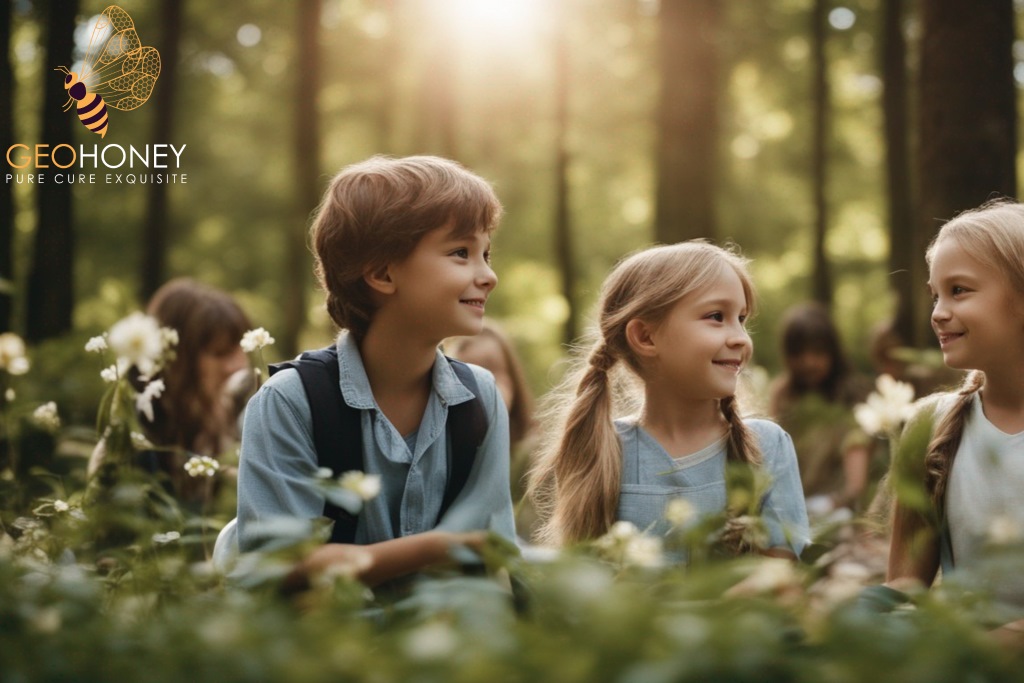- Tokyo: 10:59
- Singapore: 09:59
- Dubai: 05:59
- London: 01:59
- New York: 20:59
Why are forest schools becoming more popular?

Giving children education in the middle of nature has numerous advantages.
When you think of a classroom, the first thing that springs to mind is probably rows of pupils sitting in a confined box-like space facing a black or green board. Close your eyes and mentally go into a grassy bower bursting with seasonal flowers such as marigolds, daisies, ixoras, geraniums, pansies, and roses. and the sight is soothing to the eyes, the fresh aromas overpower the olfactory cells and the mild breeze tickles your skin. Even as you take in the chlorophyll-scented air flowing in from the lush lawn, you can hear birds chirping.
Add to that the sounds of joyful youngsters laughing, chatting, and absorbing so much from Mother Nature, and you'll quickly understand it's the most down-to-earth method for them to learn about nature and everything in it.
Welcome to Forest Schools, a global movement that is taking on in UAE schools as well.
The Knowledge and Human Development Authority (KHDA) has approved the concept, which has been applied successfully by various schools. Education specialists believe that this method of teaching has various advantages, while psychologists emphasise the therapeutic and renewing effects of this notion.
Dr. Anamika Vajpeyi Misra has been studying the impact of forest schools on children's learning methodologies. The Sharjah Women's College's licensed clinical psychologist and psychiatric social worker, who lives in Dubai and is the head of the Social Work Programme at the Higher Colleges of Technology, believes forest schools are the future of education because they provide a unique learning environment for young learners.
'Inspired learning occurs when learning environments are in tune with nature. [Children's] social and emotional abilities increase, and empathy, communication, creativity, and problem-solving skills naturally improve, pushing them to innately absorb all of the information.'
She refers to biologist EO Wilson's concept of Biophilia. According to Biophilia theory, humans have a genetically predetermined affinity for nature, and being in sync with it and having more exposure to it can assist improve their health. This is precisely what forest schools are utilising to promote excellent child development.
'It quickly became clear to management that all of our students needed natural play spaces to play, collaborate, gain confidence, understand risk, and generally do what children do best- get dirty,' says Lewis Miller, Head of the Department of Outdoor Learning and Digital Literacy Coordinator.
Today, the concept has been extended to kids aged 3 to 16, and thousands of school alumni's lives have been enriched by the experience of learning to work with tools, gardening, composting, and managing outdoor spaces, among other things. Lewis agrees with the experts. 'The Forest School concept is well documented in terms of implementing learning theories that promote holistic and academic growth,' he explains.
As the concept matured, the school established a Department of Specialist Outdoor Learning with Forest School teachers dedicated to providing primary students with at least one hour of Forest School experience per week for a term, according to Lewis, about the evolving experience, which has now been introduced to middle school as well.
Practising Fundamental Skills
During their time at Forest School, kids learn key life skills such as how to use tools securely, how to use natural resources to make micro dens for small animals, and how to create natural art.
'The kids also learn some simple activities to play with their peers. These instances may be familiar to the older generation, or if you come from a region where playing outside was the norm. However, we are seeing an increase in the number of kids who are growing insular and content to interact through technology.
Anamika discusses how learning in a natural setting can alleviate the mental tiredness caused by new technologies, revitalising a child's learning capacity. 'The Attention Restoration Theory (ART) proposed by Kaplan and Kaplan is one of the most intriguing notions in early learning. Demanding tasks in academic learning in traditional technology-adapted classrooms with cognitive overload cause weariness and depletion of the child's cognitive resources since they require a high level of attention.
However, learning in a natural environment with plants and fauna around him helps refill cognitive resources. According to the theory, natural environments provide a soft fascination,' which captures attention without requiring conscious cognitive processing, allowing for the restoration of directed attention capacity, reduction in mental fatigue, and enhancement of cognitive performance.
It is obvious that lowering anxiety levels increases learning. Spending time in nature has been shown in studies to reduce cortisol hormone production, hence reducing anxiety in youngsters. This is particularly true with neurotypical youngsters. Children's moods improve in outside environments, according to study. 'Studying in nature takes youngsters out of their usual environment and challenges them to adjust to change, enhancing life skills such as flexibility, coping, and resilience,' Dr Anamika adds.
With the successful adoption of forest schools around the world, teachers are working hard to restore the spontaneity of learning while aiming to eliminate the boredom of rote learning. It will only be a matter of time before Forest Schools become popular and indoor learning becomes selective.
Source: gulfnews.com




It is a very great start, to teach the young generation right now on how they should take care of the forest/ecosystem.